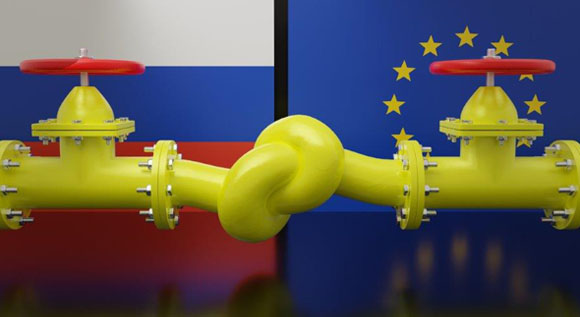Racing towards energy independence
Within just a few years, the EU wants to end dependence on Russian fossil fuels and to accelerate the European energy transition. In Brussels in mid-May, it presented its strategies for reaching these goals with the REPowerEU Plan.
 © Adobe Stock / Rawf8
© Adobe Stock / Rawf8
As early as the end of 2022, gas imports from Russia could drop by two-thirds and imports of oil from Russia could cease. By 2027, Russian energy supplies to the EU are to have been phased out altogether. Europe no longer wants to be dependent, but to pursue various strategies to ensure its energy supply itself. The REPowerEU Plan, presented in Brussels on 18 May, outlines everything to be done to that end.
The Plan is the EU’s response to the disruptions and huge price increases on the global energy markets, exacerbated and in part caused by Russia’s invasion of Ukraine. It is also a contribution towards tackling the climate crisis and ensuring European security of supply. „The green transformation will strengthen economic growth, security, and climate action for Europe and our partners,” says a press release from the European Commission.
Broad support from the European public
The majority of Europeans support the EU’s actions. According to Eurobarometer, 85 per cent believe that the EU should reduce its dependency on Russian gas and oil as soon as possible to support Ukraine.
The EU intends to do this by diversifying energy supplies, improving energy efficiency and accelerating the roll-out of renewable energy to replace fossil fuels in homes, industry and power generation.
In order to enhance energy savings, for instance, the Energy Efficiency Target could be increased from 9 per cent to 13 per cent. So that the energy supply can rest on several pillars in future, there must be substantial diversification, the paper continues. This will include the development of new LNG infrastructures and the use of alternative pipeline gas and biomethane, as well as the ramping up of the hydrogen market and the development of an EU-wide hydrogen infrastructure. In order to procure the alternative energy resources, the REPowerEU Plan will optimise the gas infrastructure, create a common EU Energy Platform and build long-term energy partnerships.
Accelerating the energy transition
In order to speed up the energy transition, the headline 2030 target for renewables is to be increased from 40 to 45 per cent. One of the measures to that end is to shorten and simplify permitting processes for the scaling-up of renewable energies and networks. In its Plan, the Commission further proposes the gradual introduction from 2026 of a legal obligation to install solar panels and a complete ban on the sale of gas and oil-fired heating systems by 2029 at the latest.
The EU wants to revive local value chains, for instance through new Important Projects of Common European Interest (IPCEIs) in the fields of solar energy, wind energy and heat pumps. These are important transnational projects of common European interest which, with state funding, make a very important contribution to economic growth, jobs and competitiveness for Europe’s industry and economy. Such IPCEI projects are already ongoing for hydrogen technologies, battery cells and microelectronics.
Additional investment of €210 billion needed
The European Commission puts the additional investment needed for REPowerEU at around €210 billion between now and 2027. This, it says in a statement, is less than the EU currently spends on Russian energy. The bulk of the money is to go to scale up renewables and networks and support measures to improve energy efficiency. The Commission suggests that Member States could, for example, finance this by channelling unused funds from the Recovery and Resilience Facility (RRF, COVID recovery fund), the Common Agricultural Policy (CAP) and the Structural Funds. Tax measures are also possible, for instance in the form of tax deductions or credits, as incentives to save energy and switch to renewables.

